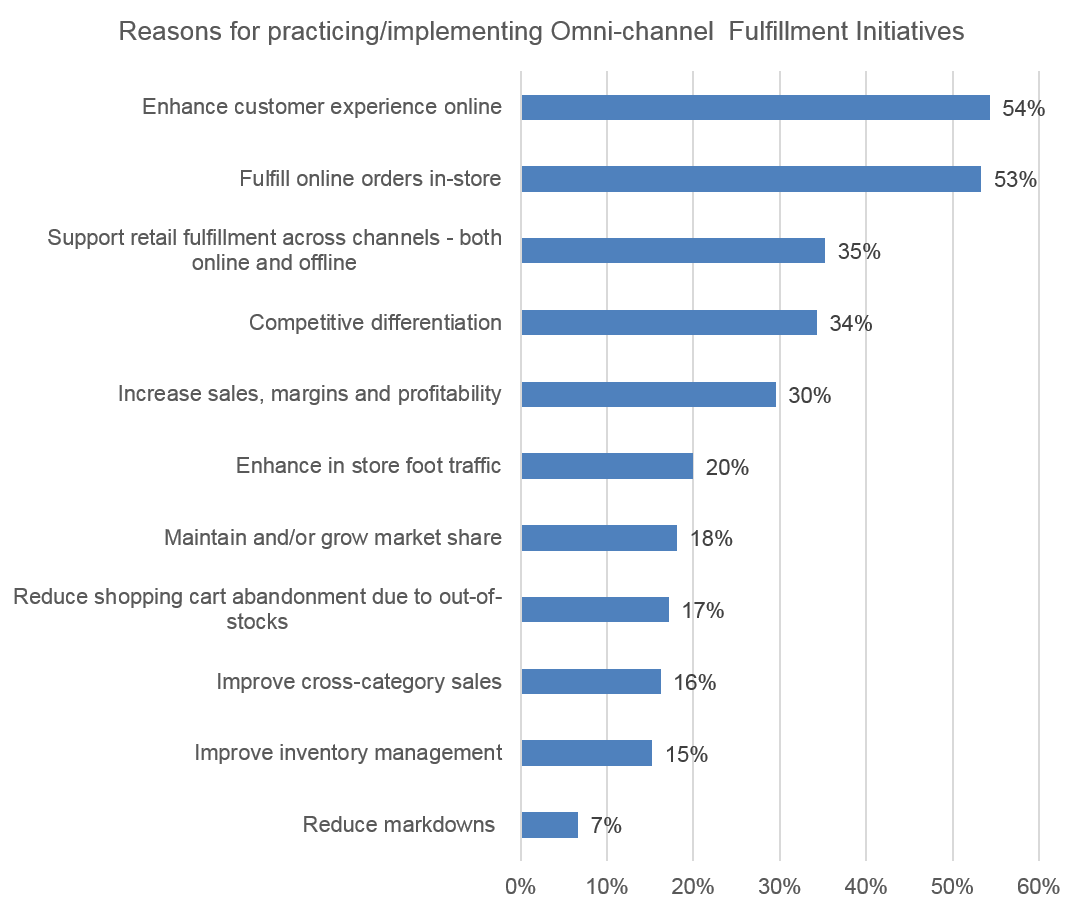Enterprise Mobility & the Connected Worker Blog
Omni-Channel Report Announcement
VDC’s Enterprise Mobility & Connected Devices practice is announcing the release of our report on omni-channel retailing, the challenges retailers have experienced implementing omni-channel operations and the impact they have had on retail organizations operations when done right. VDC defines omni-channel as an evolutionary step above multi-channel, and involves organizations taking a channel-agnostic approach to customer service and retail by attempting to seamlessly integrate shopping across both physical and digital channels. A challenge for many retailers has been translating this opportunity for their organization profitably and in a disciplined fashion. We have witnessed many retailers make knee-jerk investments in capabilities like buy on-line and pickup in store (BOPIS) without fully understanding the operational implications to their business or before addressing inventory accuracy to ensure a seamless customer journey.

According to retail executives responding to our research, the three biggest barriers to implementing omni-channel fulfillment highlighted was customer facing technology (57%), budget constraints (37%), and insufficient employee training (27%). Customer facing technology is becoming very prevalent and is seen as a key differentiator for increasing customer engagement as a whole. Budget constraints have been at the top of retail organization’s barrier list for quite some time now, and it is very common to see organizations not have the necessary resources to invest in omni-channel fulfillment initiatives and store operations. Our research indicated that currently organizations on average dedicate 7.3% of revenues towards their budget for technology and operational improvements, with store operations improvements accounting for 31.6% of this total budget. The last important barrier that was highlighted was insufficient employee training for omni-channel sales support. This often comes down to employees not having the appropriate knowledge to leverage mobile technologies within the store, and organizations who haven’t trained their associates on these various technologies will struggle with omni-channel fulfillment.

While the barriers to deploying omni-channel fulfillment initiatives are significant, if done right, the benefits can be transformative. Looking above the top three reasons for practicing/implementing omni-channel fulfillment was to enhance customer experience online, fulfill online orders in-store, and support retail fulfillment across both online and offline channels. Within the retail sector today, organizations with physical store locations face an increasing amount of pressure as E-commerce continues to rise and consumers shopping habits become inherently mobile. While E-commerce is growing at three to four times the overall rate of retail spend, physical store sales in 2017 still accounted for around 91% of total U.S. retail sales and represented a significant opportunity for organizations to fulfill both online and offline orders from the store as well as increase customer experience as a whole. One of the greatest assets that traditional brick and mortar retailers still hold over the likes of Amazon is physical store locations and their close proximity to the customer. This is something that organizations have realized is beneficial for them, and have started to put more emphasis to evolve the store format to focus just as much on consumer service, order fulfillment and returns management and online channels.
This report is scheduled to publish before the end of January, 2018. Stay tuned. View the 2017 Enterprise Mobility & Connected Devices Research Outline to learn more.